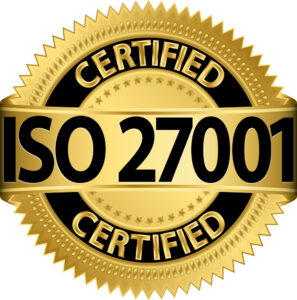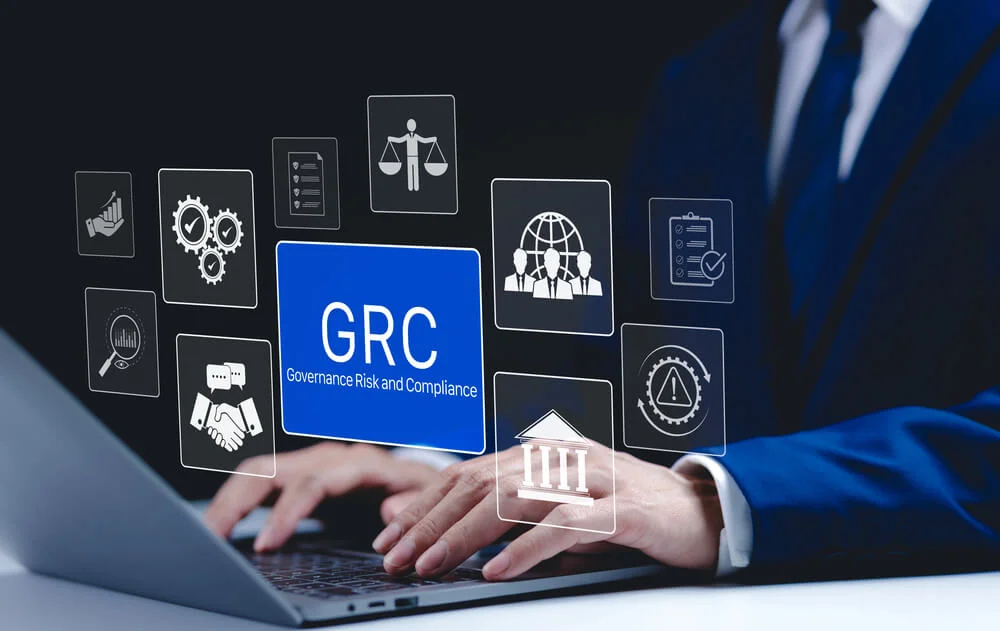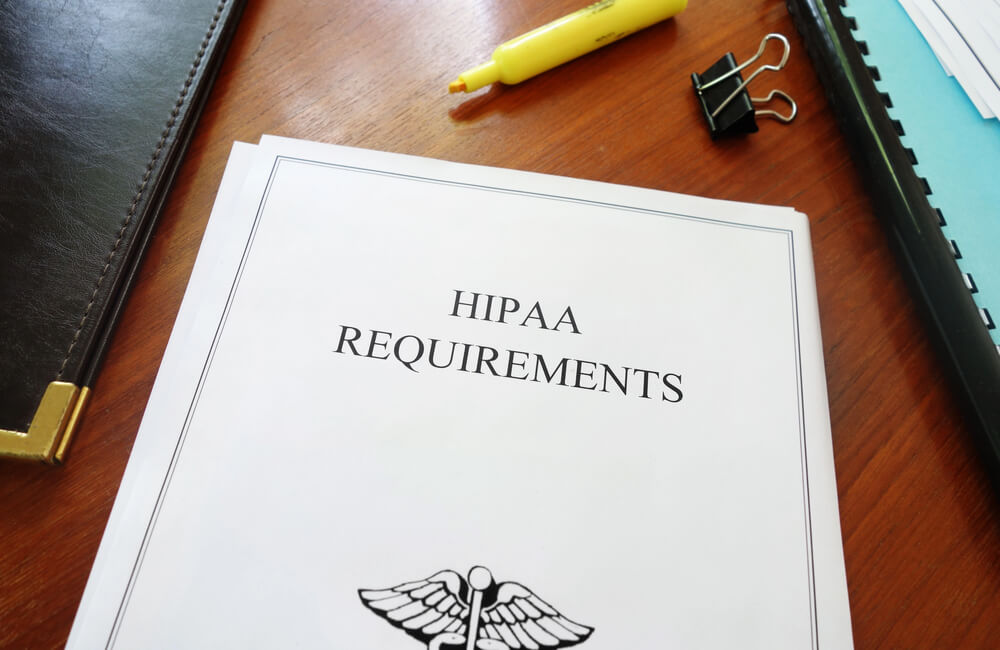Understanding ISO 27001 Compliance
Cybercrime is a growing threat in the United States and around the world. In 2022, the average cost of a cyberattack was $18,000 and the problem has cost some companies millions. Preventing these attacks is critical for organizations. Learn what ISO 27001 compliance is and why it’s one of the most popular tools organizations around the world use to combat cybercrime.

What Is ISO 27001 Compliance?
ISO 27001 is the most widely utilized international information security standard in the world. The International Organization for Standardization and International Electrotechnical Commission created it to help companies and organizations manage information securely and effectively.
Organizations that use the standard take a continual improvement approach to creating and maintaining effective information security management systems by systematically assessing information security risks and implementing procedures and policies to mitigate those risks. The ISO 27001 standard is a framework for implementing an ISMS in a way that is easier to measure, manage and improve.
ISO 27001 compliance addresses the integrity, confidentiality, and availability of information security and specifies the requirements for customized security controls. It differs from some competing standards and frameworks by focusing on a holistic and proactive approach to security, rather than adherence to specific technical controls. Organizations can pick and choose from the controls defined in the standards to create customized solutions that best fit their security needs.
History of ISO 27001
ISO 27001 has its roots in the BS 7799 standard developed by the British Standards Institute Group and the United Kingdom Government’s Department of Trade and Industry in 1995. The BSI developed this standard to address growing cybersecurity threats and establish a standard for how organizations should design their ISMS to best protect their information assets.
ISO adopted the first part of the BS7799 standard in 2000. It initially called this standard ISO/IEC 17799 and then later revised and renamed it to ISO/IEC 27002 in 2007. ISO 27002 provides organizations with additional guidance to help them implement the recommended security controls in the ISO 27001 standards.
ISO later adopted the second and third parts of BS 7799 as the ISO 27001:2005 standards. It also created a certification option so that organizations could prove their ISO 27001 compliance. ISO periodically revises these standards, so exactly what ISO 27001 is continues to evolve over time. The current version is ISO 27001:2022.
What Is an Information Security Management System?
An ISMS is a collection of rules that an organization creates to address security concerns. These rules describe the approach an organization takes to protect information assets.
What Are the Principles of the ISO 27001 Standard?
The goal of ISO 27001 compliance is to protect the confidentiality, availability, and integrity of information. These principles establish that only authorized persons should have access to or be able to change information and that they should be able to access the information whenever they need to.
The ISO 27001 standard is based on the phases of the Plan-Do-Check-Act methodology:
- Plan: Make a plan to organize and set objectives for information security and select security controls.
- Do: Put your plan into production.
- Check: Monitor your ISMS to measure if the results are fulfilling your objectives.
- Act: Take steps to improve any non-compliant issues you discovered in the Check phase.
What Are the ISO 27001 Compliance Requirements?
The ISO 27001 standard includes requirements for the governance framework of an organization’s information security program and 14 control domains subdivided into 35 control objectives and 114 controls that meet those objectives.
The standards address six security areas:
- Company security policy
- Environmental and physical security
- Incident management
- Asset management
- Access control
- Regulatory compliance
What Are the Benefits of ISO 27001 Compliance?
Implementing ISO 27001 compliance standards has multiple benefits.
ISO 27001 Helps Organizations Comply With Legal Requirements
There are many information security laws and regulations that organizations must comply with. Implementing ISO 27001 standards helps organizations avoid legal issues.
ISO 27001 Reduces Costs
The cost of cyberattacks can range from thousands to millions of dollars. Preventing these attacks can save organizations substantially more money than it costs to implement ISO 27001 standards.
ISO 27001 Helps Organizations Deal With Employee Turnover
Without written processes and procedures, employees may not know what to do or when to do it, particularly if the person who initially implemented those processes leaves the company. Implementing ISO 27001 standards requires companies to write down procedures and processes so that training new employees is easier and more consistent.
What Can You Do To Implement ISO 27001 Compliance Standards?
There is no one set method you have to follow to implement an ISO 27001 ISMS, but these 10 steps can help you get started.
1. Initiate Your ISMS Project
Start by choosing a project leader and then select a cross-departmental team with the expertise and authority necessary to implement the project. If you do not already have a copy of the latest version of what the ISO 27001 standard is, purchase one. If you plan to obtain certification, you may want to identify the certification body in your country. Get approval from senior management and then establish with your team the reasons why you want to implement ISO 27001 compliance standards and what you hope to gain from the process.
2. Further Define and Organize Your Mandate
To develop your implementation plan, it is helpful to further organize and define your reasons for implementing the standards. Review your organization’s strategic plan, mission, and information technology goals. Create your information security goals and objectives based on your review. Calculate the return on investment of the project. Identify where your ISMS processes may overlap with existing company processes. Define the scope of your project.
3. Create Your Documentation
Documentation is a vital part of the process because it prevents your organization from straying from standards when the employees who established them leave. Document your information security policies, processes, and procedures. Create guides that instruct employees on how to fulfill policy requirements. Craft any other documents required by the ISO 27001 compliance standards.
4. Establish Employee Training and Culture Initiatives
You must train your employees and establish a culture of information security to ensure the success of your project. Depending on your business, you may also need to establish training for third parties who interact with your business.
5. Conduct a Risk Assessment
ISO 27001 standards do not require you to utilize a specific risk assessment technique. However, risk assessment is a critical component of the process. You must establish a baseline and identify the risks you need to manage before you can start managing them.
6. Implement Your Risk Management Plan
Implement techniques to manage the risks you identified in the previous step. The four main approaches to risk management include acceptance, avoidance, reduction, and transfer.
7. Operate, Evaluate and Review Your ISMS
Once your ISMS is in place, you must continuously monitor it and evaluate whether it is meeting your objectives. You can accomplish this by conducting management reviews and internal and external audits.
8. Prepare for Certification
If you intend to get certified for ISO 27001 compliance, the next step is to prepare for the process. Start by conducting an internal audit to ensure you are meeting the standards, review the results of your audit and then select an accredited certification body.
9. Conduct a Certification Audit
Certification audits are a two-stage process that involves an assessment of whether your ISMS plan and implementation of that plan satisfies ISO 27001 standards. If you pass the first stage of the assessment, the second stage will happen about six weeks later.
10. Maintain Your ISMS
As security threats, regulations and the needs of your organization change, so must your ISMS. Additionally, to maintain certification, you will need to pass audits every two to three years, depending on the certification body.
What Do You Need To Stay ISO 27001 Compliant?

Internal audits are one of the best ways to ensure ISO 27001 compliance. Internal audits help you:
- Detect non-compliance before someone else does
- Demonstrate your commitment to compliance
- Identify processes that need improvement
- Avoid security breaches by finding weaknesses before exploits happen
- Improve staff awareness and understanding
What Is an ISO 27001 Internal Audit?
An ISO 27001 internal audit involves multiple steps. Here is how to complete one.
Review Your Documentation
Review the documentation you created when you established your ISMS to ensure that the scope of your audit matches the scope of your organization. This will help you determine who the stakeholders are and define what you need to audit.
Meet With Management
Before you create your audit plan for ISO 27001 compliance, talk to your manager about the resources you need for the audit and when the audit should happen. Discuss any concerns you have and create checkpoints for updating your board or other executives.
Conduct the Audit
Conduct the audit by:
- Interviewing front-line staff about how the ISMS works
- Validating evidence by performing audit tests
- Documenting the results of audit tests
- Reviewing ISMS reports and data
Analyze Evidence
Sort and review the evidence you gathered in the audit to determine how well your risk management plan is meeting your organization’s objectives. Make note of any problem areas you need to address.
Report Your Findings
Prepare an internal audit report that provides details about your audit process, findings, analysis and recommendations. Present this report to management and use it to create an action plan for improving your ISMS.
Most organizations should conduct an ISO 27001 audit at least once every three years. Industry experts recommend an annual review where possible. If you want to take a step beyond internal audits, consider ISO 27001 certification.
Is ISO 27001 Compliance Required by Law?
A few countries have laws that require organizations to be ISO 27001 compliant. However, in most countries, the methods companies use to meet regulatory requirements are not mandated by law. Some industries expect compliance even though it is not required.
What Is ISO 27001 Certification?
ISO 27001 certification is a method of verifying that a company’s ISMS is ISO 27001 compliant. It can also refer to the process of certifying individuals as qualified to implement or audit ISO 27001 standards. To gain ISO 27001 certification an organization must undergo an assessment by an ISO-accredited certifying body.
What Are the Benefits of ISO 27001 Certification?
Organizations can implement ISO 27001 compliance standards without getting certified. However, the certification has several benefits.
Improves Your Reputation
Understanding what ISO 27001 compliance is and implementing those best practices helps you avoid security threats. Certifying demonstrates your commitment to protecting your organization and your customer’s data. This provides peace of mind to stakeholders and may give you an edge over your competition.
Keeps You Accountable
Organizations are constantly juggling competing demands on their limited resources. While you may have good intentions to keep up with your ISO 27001 strategies, without an external party to hold you accountable, it can be easy to let things slide when other priorities become your focus. The need to pass a certification audit helps ensure that you continue to implement security best practices.
Helps You Avoid Regulatory Fines
Failing to comply with data protection requirements can cost your organization a substantial amount of money. ISO 27001 compliance standards incorporate international data protection requirements. Certification helps ensure that your organization is compliant with both the standard and regulatory guidelines.
Reduces the Need for Customer Audits
Customers have a vested interest in how well you protect their data. Some customers may demand you submit to information security audits to ensure you meet their standards. ISO 27001 certification reduces this need because it is widely accepted as proof that a company has an effective security policy.
Helps You Fulfill Contractual Requirements
Some customers will only work with companies that agree to a contractual obligation to achieve and maintain ISO 27001 certification. If you choose not to get certified, these customers may opt to work with a competitor instead.
What Compyl Can Do To Help With ISO 27001 Compliance
Want to learn more about what ISO 27001 compliance is? We can help. Compyl is the only all-in-one information security and compliance automation platform. The Compyl platform helps customers understand what is and is not working in their current ISMS and provides a central location for the information they need to generate actionable insights. The platform features more than 50 native integrations and over 1000 monitoring controls and is flexible enough to scale with your organization as your ISO 27001 compliance needs change. Contact us online to request a demo.





